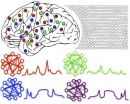(Press-News.org) About half of women who require radiation therapy after they have had a mastectomy and immediate breast reconstruction develop complications that necessitate a return to the operating room, but pre- or post-mastectomy chemotherapy does not appear to be associated with the need for additional procedures, according to two reports in the September issue of Archives of Surgery, one of the JAMA/Archives journals.
An increasing number of women are undergoing mastectomy as a treatment for breast cancer or as a means to prevent cancer if they have a genetic predisposition, according to background information in the articles. Previously, most women underwent mastectomy and then radiation or chemotherapy, followed by a second procedure for breast reconstruction after completing therapy. However, many treatment facilities now offer the option of having breast reconstruction at the same time as mastectomy. Studies suggest immediate reconstruction is safe and has potential psychological and aesthetic benefits.
Rates of radiation therapy after mastectomy are also increasing. In one article, Dara Christante, M.D., and colleagues at Oregon Health & Science University Knight Cancer Institute, Portland, studied 302 mastectomy patients with stage I to III breast cancer treated between 2000 and 2008, identified via an institutional cancer registry. Of the 302 women, 152 had breast reconstructions, including 131 that were immediate; 183 (60 percent) underwent biopsies to detect malignancy in their lymph nodes, of whom 108 (59 percent) had a negative finding; and 100 underwent postmastectomy irradiation to the chest wall.
"Postmastectomy irradiation and immediate breast reconstruction were each indentified as strong independent predictors of complications," the authors write. "Postmastectomy irradiation tripled the risk for an unplanned return to the operating room and immediate breast reconstruction increased that risk eight-fold. The combination of immediate breast reconstruction and postmastectomy irradiation resulted in nearly one of two patients returning to the operating room with complications compared with 7 percent of patients who received postmastectomy irradiation but did not undergo reconstruction."
Patients are typically counseled to avoid immediate breast reconstruction if they may be at risk of needing radiation therapy, the authors note. However, among patients in the current study, seven of 39 (20 percent) who were considered low-risk enough to have immediate reconstruction required irradiation after final pathology reports were available.
"Therefore, predicting postmastectomy irradiation more accurately would permit avoidance of immediate breast reconstruction and its postmastectomy irradiation–associated complications, potentially decreasing the rate of unplanned operations," the authors write. "Conversely, some women are unnecessarily directed away from immediate breast reconstruction because of an overestimation of their risk for postmastectomy irradiation. In this series, 12 of 22 patients (55 percent) who underwent delayed reconstruction did not undergo postmastectomy irradiation."
Knowledge of lymph node status significantly contributed to the ability to predict postmastectomy irradiation, the authors note. Therefore, women considering immediate breast reconstruction might wish to have a sentinel lymph node biopsy performed prior to mastectomy. "Patients with a negative sentinel lymph node would be reassured that their risk with immediate breast reconstruction is low," the authors conclude. "Patients with a positive sentinel lymph node would be identified as having a higher, quantifiable risk of meeting postmastectomy irradiation indications."
In another article, Anne Warren Peled, M.D., and colleagues at Helen Diller Family Comprehensive Cancer Center, University of California, San Francisco, studied 163 women who underwent mastectomy and immediate breast reconstruction between 2005 and 2007. Of these, 57 received chemotherapy before their surgery and 41 received chemotherapy post-operatively; all were followed for an average of 19.2 months to monitor postoperative complications.
Overall, 31 percent of patients had a complication requiring a return to the operating room. This rate did not differ based on whether women received chemotherapy before surgery, after or not at all. Postoperative infections developed in 18 patients (44 percent) who received chemotherapy after surgery, compared with 13 patients (23 percent) who received chemotherapy before surgery and 16 patients (25 percent) who did not receive any chemotherapy.
"Although systemic chemotherapy has been thought to increase wound-related complications, our study demonstrates that risk of non-infectious postoperative complications is not increased after mastectomy and immediate breast reconstruction among women who receive chemotherapy," the authors conclude. "Additionally, the timing of chemotherapy in relation to mastectomy did not have a significant impact on surgical outcomes. However, the wound infection rate was significantly higher in patients who had received adjuvant [postoperative] chemotherapy and in some cases resulted in delay of chemotherapy."
"These results suggest a possible benefit for pre-operative administration of chemotherapy in those patients who require chemotherapy, even in women who will undergo mastectomy, and they support the use of immediate reconstruction in this patient population."
INFORMATION:
(Arch Surg. 2010;145[9]:873-878, 880-885. Available pre-embargo to the media at www.jamamedia.org.)
Editor's Note: Please see the articles for additional information, including other authors, author contributions and affiliations, financial disclosures, funding and support, etc.
High blood glucose levels after surgery may be an important risk factor for infection at the surgical site in patients having general surgery, according to a report in the September issue of Archives of Surgery, one of the JAMA/Archives journals.
Surgical site infection accounts for 14 percent to 17 percent of hospital-acquired infections, making it the third most common type of infection acquired at health-care facilities and the most common among patients having surgery, according to background information in the article. "Studies have shown that these infections prolong ...
About one in ten U.S. adolescents uses sunless tanning products, and an intervention promoting these products as an alternative to regular tanning may reduce sunbathing and sunburns among adult women, according to two reports in the September issue of Archives of Dermatology, one of the JAMA/Archives journals.
Ultraviolet radiation exposure was recently upgraded to the highest cancer risk category and is the most common avoidable cause of skin cancer, according to background information in the articles. Sunless tanning products offer an alternative method of achieving ...
Botulinum toxin treatment appears to offer a temporary, short-term solution to relieve drooling in children diagnosed with certain neurological disorders, according to a report in the September issue of Archives of Otolaryngology – Head & Neck Surgery, one of the JAMA/Archives journals.
"Recent estimates suggest a prevalence of [drooling in] nearly 60 percent in children in special care school, of which 33 percent could be classified as severe," the authors write as background in the article. "Depending on the associated neurological disorder, cognitive abilities and ...
Severe injury to the esophagus can occur after a child swallows a disc battery, according to a report in the September issue of Archives of Otolaryngology–Head & Neck Surgery, one of the JAMA/Archives journals.
"A disc battery is an increasingly common foreign body ingested by children," the authors write as background information in the article. The American Association of Poison Control Centers reported a total of 2,063 disc battery ingestions in 1998; the number increased 80 percent during the next eight years. When the battery is lodged in the esophagus, its alkaline ...
Patients who seek a second surgery to revise their rhinoplasty often do so because they are dissatisfied with the symmetry of their nasal tip and because they experience nasal obstructions, according to a report in the September/October issue of Archives of Facial Plastic Surgery, one of the JAMA/Archives journals. Surgeons who examine revision rhinoplasty candidates cite slightly different findings than patients, suggesting that communication about nasal aesthetics could be improved.
Approximately 5 percent to 15 percent of patients who have rhinoplasty [plastic surgery ...
Analysis of seagull droppings has revealed that one in ten carry 'superbug' bacteria, resistant to the last-resort antibiotic Vancomycin. Researchers writing in BioMed central's open access journal Proteome Science investigated 57 migratory seagull samples recovered from an island off the coast of Portugal.
Gilberto Igrejas from the University of Trás-os-Montes and Alto Douro, Portugal, worked with a team of researchers to carry out the study. He said, "We used a novel technique called proteomics to detect the maximum number of bacterial proteins which are thought to ...
Berkeley — When it comes to conducting complex tasks, it turns out that the brain needs rhythm, according to researchers at the University of California, Berkeley.
Specifically, cortical rhythms, or oscillations, can effectively rally groups of neurons in widely dispersed regions of the brain to engage in coordinated activity, much like a conductor will summon up various sections of an orchestra in a symphony.
Even the simple act of catching a ball necessitates an impressive coordination of multiple groups of neurons to perceive the object, judge its speed and trajectory, ...
SPRINGFIELD, MO—The American elderberry is showing promise as a profitable commercial fruit crop. Traditionally used for making jelly, juice, and wine, elderberry is becoming increasing important in North America's burgeoning "nutraceutical" industry. Historically, elderberries have mostly been harvested from the wild; researchers have made recently made efforts to select or develop improved cultivars. Increased interest and emerging markets are encouraging scientists to develop improved elderberry cultivars that yield consistent, superior production. Scientists from the ...
GRIFFIN, GA—Blueberry aficionados will soon have a tasty, colorful new variety for their backyard gardens. Blueberry experts D. Scott NeSmith and Mark K. Ehlenfeldt introduced 'Blue Suede™' in a recent issue of HortScience. The new southern highbush blueberry (Vaccinium hybrid) was released by the University of Georgia's College of Agricultural and Environmental Sciences, the University of Georgia Agricultural Experiment Station, and the U.S. Department of Agriculture–Agricultural Research Service. 'Blue Suede™' is targeted for sales to the home gardener market.
According ...
WEST LAFAYETTE, Ind. - A Purdue University-led research team has uncovered the chemical components of the adhesive produced by oysters, providing information that could be useful for fisheries, boating and medicine.
A better understanding of oysters' ability to stick together to form complex reefs would help those trying to boost the dwindling oyster population, aid in the creation of materials to keep boat hulls clean without harming the environment, and bring researchers one step closer to creating wet-setting adhesives for use in medicine and construction.
Jonathan ...


